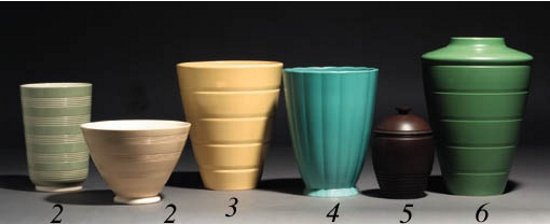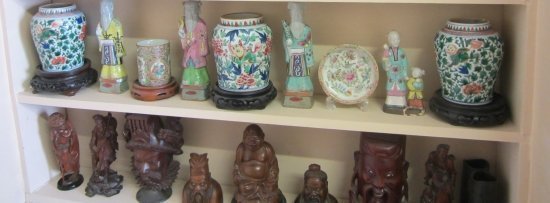George III’s second son, Frederick Augustus, born in 1763, was created Duke of York in 1784. Although he served most of his life in the British army, the Duke had a passion for silver and left staggering debts when he died in January 1827. Soon after his death, the Duchess of York approached Christie’s to arrange a sale of his extensive collection to help to cover these debts.
The sale of ‘the whole of the Magnificent Silver and Silver Gilt of His Royal Highness’ took place on 21 March 1827 in London.1 Lots 80 and 81 each featured a silver-gilt bread basket described in the catalogue as:
…of beautiful design, made by Messers. [sic] Rundell and Bridge with the Royal Ducal crest and cypher in relief in the centre…the border composed of a frieze of vines in fruit, very sharply and beautifully modelled, with a reeded and corded edge. The handles terminate in rams’ heads, the basket is 14 inches in diameter, the weight is 82 oz 10 dwts.
Almost a century later, one of these baskets returned to Christie’s for sale in 1922 and subsequently in 1956, 1979 and 1997. The last sale resulted in it being brought from New York to Australia, courtesy of the Moss Vale dealer John Hawkins, for the Ron Hawkes collection. Since 1998 it has been on loan to the Powerhouse Museum where it may currently be seen on display.
Although no documentation survives regarding the identity of the buyers of the baskets at the 1827 sale, four small crests subsequently engraved on the Hawkes basket indicate that it became separated from its pair at that time. The basket has a crest of Orde engraved to the foot, a crest which the Royal Kalendar for 1833 assigns to Sir John Powlett-Orde, Baronet of Morpeth Northumberland. Sir John married shortly before the sale and it appears that the basket was bought by the newlyweds. In 1890 the basket reappeared in the inventory of the Burdett-Coutts silver, with three separate crests, those of Burdett, Coutts and Bartlett engraved to the rim.2
In 1981 the companion ducal basket was purchased by John Hawkins on behalf of Kerry Packer. The post-1827 history of this basket has proved difficult to reconstruct. It does not bear any additional crests so it can be assumed that it was not acquired by Sir John Powlett-Orde in the Duke of York sale.
A selection of Regency silver from the Kerry Packer collection has recently been deposited in the Powerhouse Museum where it is being prepared for display in the Gold and Civilisation exhibition due to open at the National Museum of Australia in March 2001. As a result, the two baskets have been reunited – although only temporarily – presumably for the first time in 173 years. A close inspection of the pair has confirmed that they are identical but for the direction of the ‘cord’ wound around the rims: the cord on the Hawkes basket runs to the right, whereas that on its companion is reversed. This difference in design detail means that the baskets complement each other when on show, suggesting that they were conceived as display baskets rather than for use at the banqueting table.
The Duke of York baskets are a testimony to the outstanding skills of London silversmiths Benjamin Smith and Digby Scott who jointly ran workshops in Lime Kiln Lane, Greenwich between 1802 and 1807.3 In these workshops they created some of the most innovative silver of the period. Until 1807, when the celebrated silversmith Paul Storr moved his workshop to Dean Street in Soho, Smith & Scott were principal suppliers of silver articles to Rundell, Bridge & Rundell, jewellers and silversmiths to the royal family from about 1798 to 1843 (from 1777 to about 1803 they were known as Rundell & Bridge). Articles produced by Smith & Scott were equal in quality to those crafted by Paul Storr; in fact it was not uncommon for these silversmiths to make identical objects using the same casting moulds. Furthermore, Smith & Scott frequently made the earlier versions, examples including vessels with grapevine trails and the famous Trafalgar Vase, designed by the sculptor John Flaxman.4
The baskets, made in 1804, were possibly designed by Digby Scott.5 Massive, sumptuously gilt and designed in the classical revival style, they are exquisite examples of early Regency silver. It is possible that leopards’ and rams’ heads were among motifs favoured by the Duke as at least two other articles he owned, an ice pail and a salver, featured the same handles.6
Today the Duke of York baskets are the only pair in this design known to exist. A contemporary reference, however, to an identical basket being displayed at Rundell’s Ludgate Hill showroom in 1807 as part of the Grand Service made for the Prince of Wales, may mean that more than these two pieces were actually produced.7 Many of the firm’s articles were duplicated and sold to different customers to recoup extremely high production costs. It is possible, however, that the basket on display was one of those commissioned by the Duke of York as, according to a different source, other ‘sumptuous and expensive specimens of massive plate’, not belonging to the Grand Service, were also included in the exhibition.8 Certainly these baskets would have been worthy of inclusion in the spectacular display at Rundell, Bridge & Rundell, ‘a fashionable place of resort for the higher circles’.9
Acknowledgement: I am grateful to John Hawkins for providing information regarding the provenance of the Duke of York baskets.
Footnotes
1 J. Christie, A Catalogue of the Whole of the Magnificent Silver and Silver Gilt of His Royal Highness, The Duke of York, London 1827.
2 Collection of Old Plate, The Property of the Rt. Hon. The Baroness Burdett-Coutts and Mr Burdett-Coutts, M.P., vol. 3, London 1890.
3 Smith parted from Scott in 1807; from 1810 he worked with his brother James Smith and from 1812 on his own, ceasing his association with Rundell, Bridge & Rundell in about 1814.
4 Claude Blair, The History of Silver, London 1987, p. 159
5 Information supplied by John Hawkins
6 Memoirs of the late Phillip Rundell, Esq., London 1827 (NSW University Library microfilm), pp. 23-24
7 George Fox, ‘An account of the firm of Rundell, Bridge and Co.’, 1843-46, manuscript, Baker Library of the Graduate School of Business Administration, Harvard University; see also N.M. Penzer ‘Silver and Plate’, in The Regency Period, London, 1958, p. 80
8 Memoirs…, op. cit., p.12
9 ibid.




